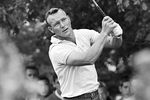Try Arnold Palmer’s Timeless Tips
I’ve seen a lot of changes during my time in golf, and one is that the teaching of the game has gotten complicated. If you do a handful of things correctly–like take the club away without breaking your wrists and keep your head still throughout the swing–you can play pretty well without too much thought. When I was 4 years old my dad took my hands and set them on a club and said, “Now don’t you ever change that.” And basically I haven’t. With all the ways there are now to analyze the swing, you can make the game very difficult–and not much fun. Here I give you my favorite tips from my old books and articles. I believe they’re as true today as the day I first used them.— Arnold Palmer (Editor’s Note: This article was originally published in 2009)
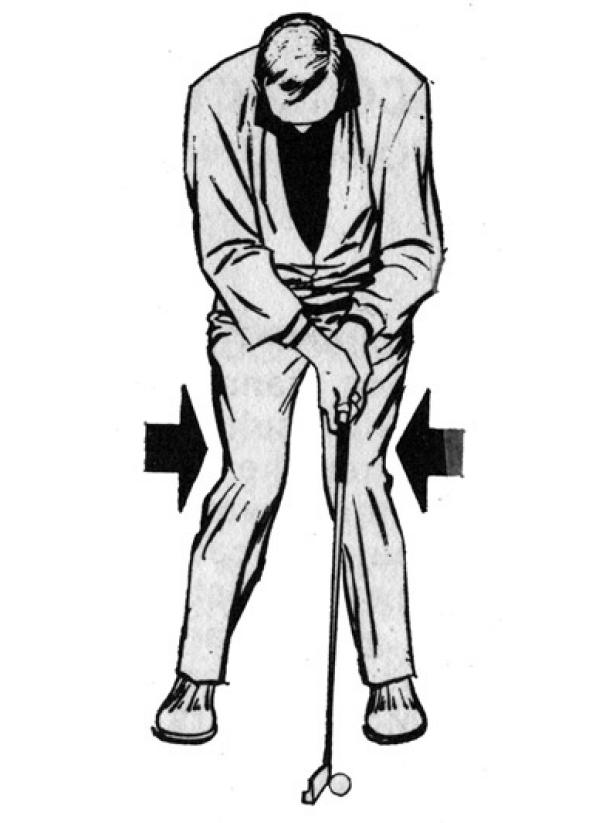
FEEL ‘INWARD’ WHEN PUTTING
The most important thing about putting is to remain absolutely motionless. Only your hands and arms should move during the stroke. To eliminate body movement, I try to feel “inward” when I set up. I like to feel that my elbows and my knees are pinched in toward an imaginary axis that runs through the middle of my body. This feeling keeps my weight centered and my body quiet throughout the stroke. WHAT I THINK TODAY: Keeping your body quiet during the stroke is still my No. 1 putting key–and nobody does that better than Tiger.

IMAGINE WHISK ON CHIP SHOTS
Sometimes words sound like what they describe. A good example is the broom. Anyone who has used one knows it goes whisk when you sweep.I think whisk is a good sound to think about when you hit a chip shot. The clubhead should brush the grass and whisk the shot on its way. There is nothing lazy or sloppy about a chip. It’s quick and firm. It whisks.So make your chips whisk. You might even imagine that you’re swinging a broom. WHAT I THINK TODAY: Very good image. Not only for the sound, the swing shape should be a sweep, too.
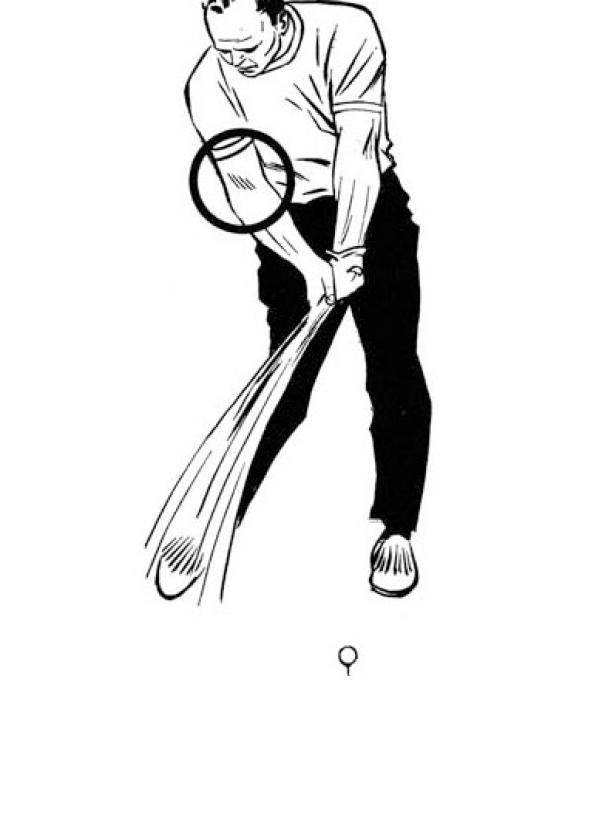
RETURN YOUR RIGHT ELBOW TO YOUR SIDE
Starting down, I’m conscious of unwinding the muscles of my left side, which were coiled on the backswing. My left arm is straight, and my right elbow moves back to my right side as quickly as possible. The move to be avoided at all cost is letting the right hand take over at this point in the swing.The feeling that I get near and at impact is that my hands are ahead of the ball. My left hand guides the club, and my right hand supplies the hitting power at impact. WHAT I THINK TODAY: I’d add this: Push off your right foot through the shot, and keep a steady head.
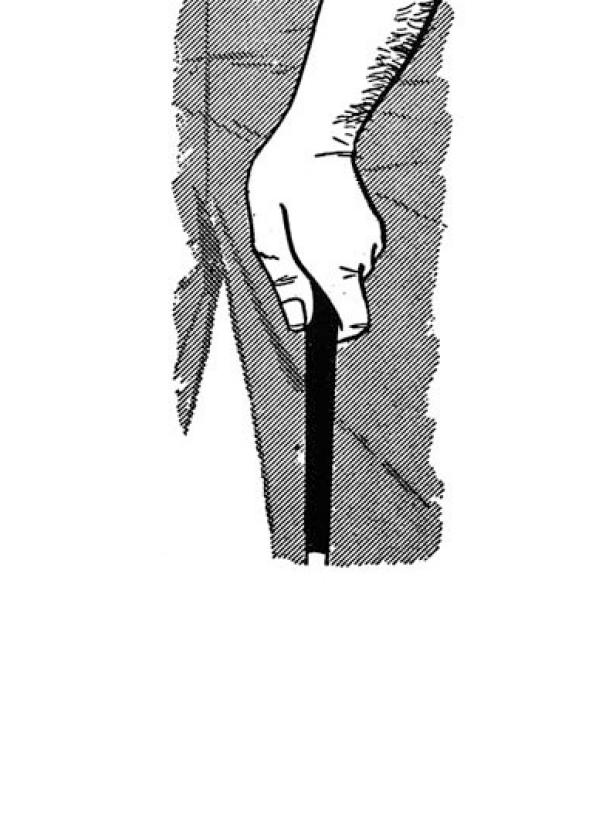
START OUT WITH A STRONG LEFT HAND
Once the left-hand grip is taken properly, it’s simple to add the right hand. So be sure to take more time with the left. The shaft should cross the left palm diagonally from the bottom (or outer) joint of the forefinger to just below the little finger. This position produces a “strong” left hand, in which the “V” formed by the forefinger and thumb points to the right shoulder. Fold your left hand over the club, and make sure the thumb rests on the right-top part of the shaft. WHAT I THINK TODAY: For the beginner, a strong left-hand grip works best. You can always weaken it later to lessen a hook; that’s what I did.
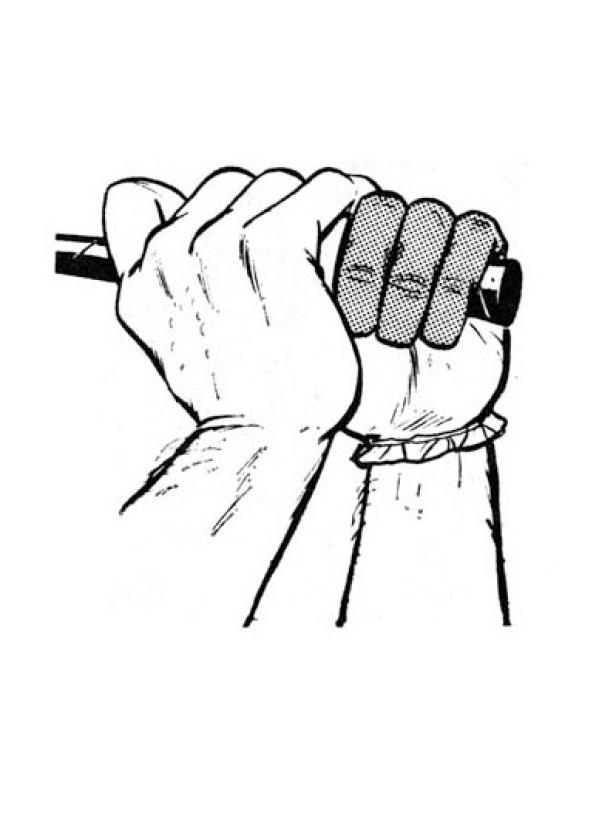
THREE FINGERS THAT MAKE YOUR GRIP
An effective grip requires strong hands, especially the last three fingers of the left hand, which will be the first to let go of the club at the top of the swing. To strengthen these fingers, squeeze the steering wheel of your car with them, as tightly as you can, for 10 seconds every time you drive. This exercise will do more for your game than any drill I can imagine.

EXTEND THE IMPACT ZONE FOR ACCURACY
Many shots stray because the golfer has rolled the wrists to the left–closing the clubface–during impact, or moved the club “across the ball” through the hitting area. To eliminate these causes of misdirected shots, continue the clubhead along the target line for an instant longer than normal after impact. Extending the impact zone will automatically give you a full extension of your right arm on the follow-through and a nice, high finish position. WHAT I THINK TODAY: I like this idea, but don’t sway toward the target; just “throw” the clubhead down the line.
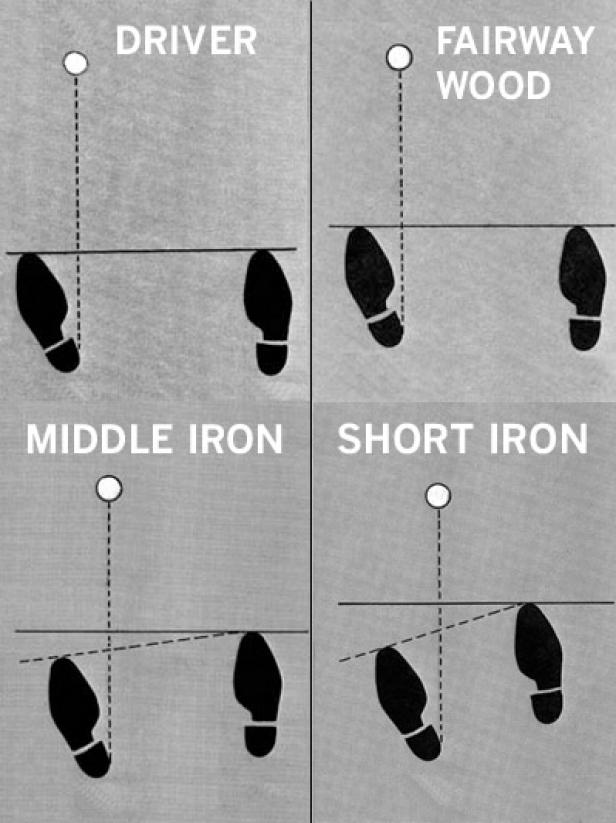
HOW TO ADJUST YOUR STANCE
Generally, the less lofted the club, the shallower the angle of attack should be; the more lofted the club, the more descending the angle should be.With the driver and fairway woods, your stance should be fairly wide and square to support the long, sweeping swing required to hit these clubs. But as you go through the bag, to the long, middle and short irons, you should progressively narrow and open your stance to set up an increasingly descending downswing. You’ll find that positioning your feet in relation to the length of the shaft–open and narrow with short clubs; wide and more square with longer ones–is easy to get used to. WHAT I THINK TODAY: Opening the stance for short clubs also pre-sets the body pivot through impact. You don’t need power with these clubs, but you do need control.
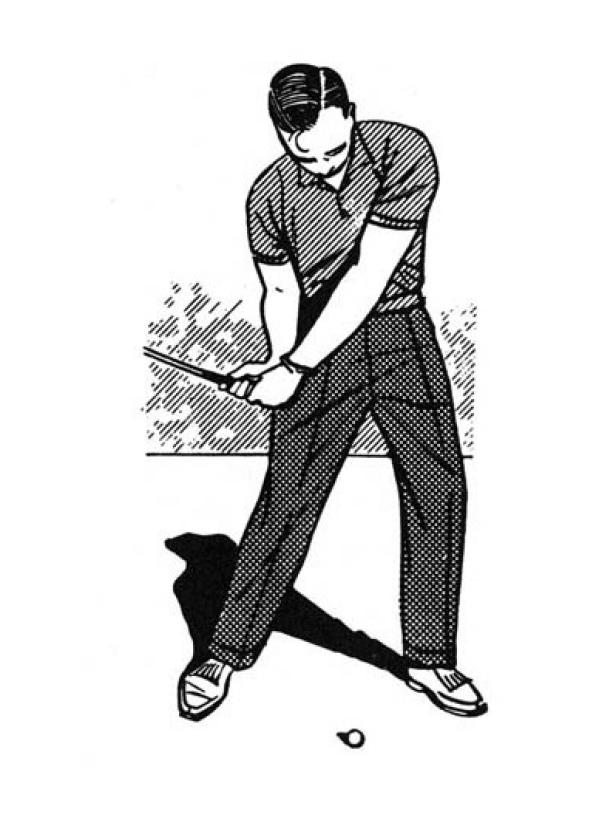
SWINGING EASY IS HARD TO OVERCOME
Many golfers discover they can hit the ball squarely more frequently if they don’t swing hard. So they lose the will to be aggressive. The problem is that swinging easy becomes a difficult habit to break. As soon as the soft hitters try to add some more power, they begin to miss shots. I think that almost any golfer can learn to hit the ball hard and squarely.
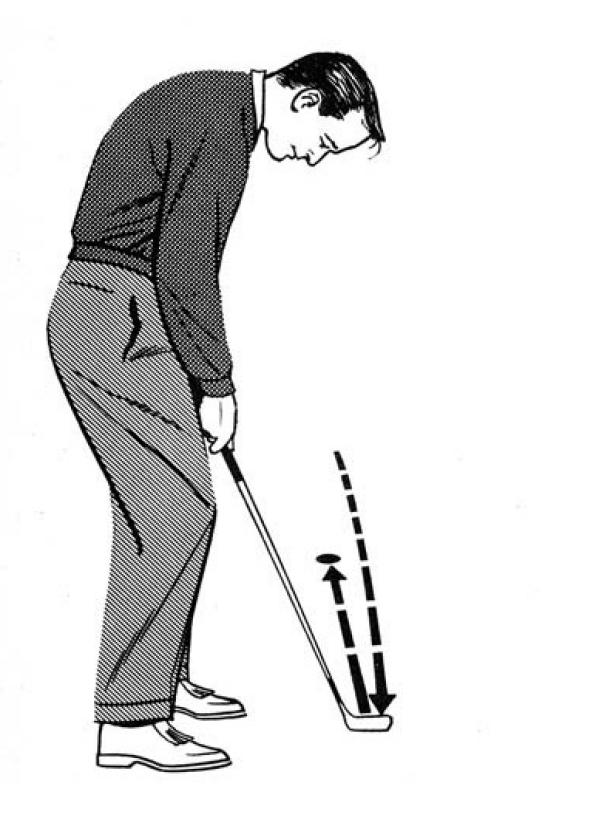
DON’T BABY THE COMEBACK PUTT
If you overshoot the hole on your first putt, fight the tendency to be timid on the return putt. If you’ve seen the line in the first putt, you have a good idea of how the second one will break. Armed with this knowledge, give the comeback putt a firm, smooth, accelerating stroke. There should be no hesitation or jerkiness about it.
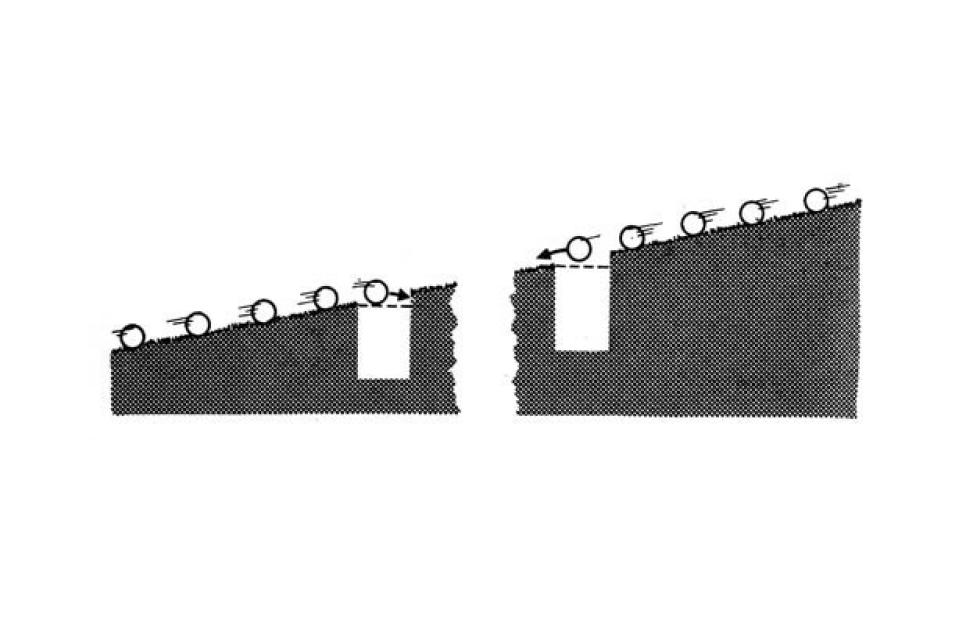
PLAN YOUR PUTTS ON THE APPROACH
The illustration clearly shows why you should play your approach shots to finish below the hole, so that you leave yourself an uphill putt. The ball that runs uphill to the hole has the higher edge of the cup acting as a built-in backstop. The downhill putt has little or no backstop. A downhiller struck too hard has much less of a chance of going in than a similar uphill putt has. WHAT I THINK TODAY: With faster greens, this advice has never made more sense.
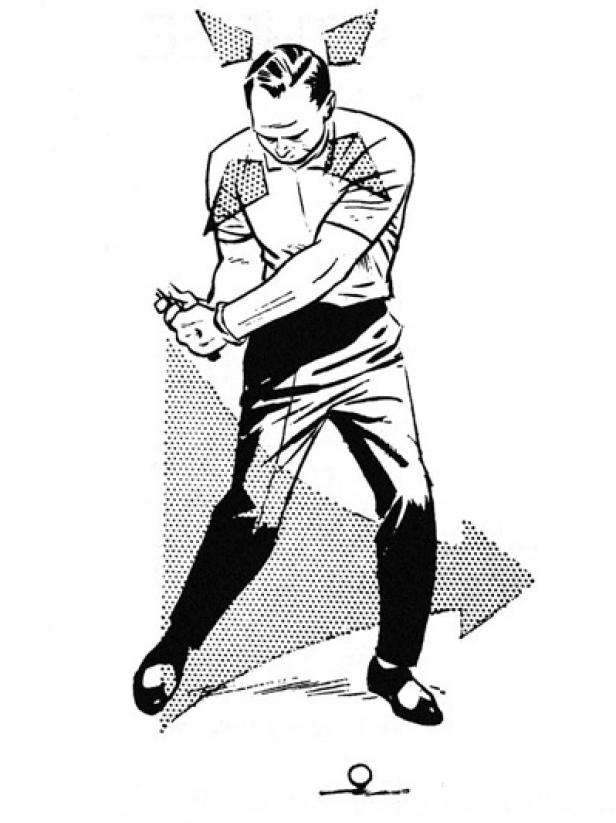
ALWAYS KEEP YOUR HEAD IN PLACE
Getting comfortable over the ball is a big part of keeping your head still: If you’ve got nice balance and your feet are good and firm, you have a far better chance to do it. Relaxation is part of it: If your body movements flow free and easy, there’s no physical force to pull you off your axis. But it’s mostly a matter of concentration: You’ve just got to be determined to hold steady. WHAT I THINK TODAY: If a proper grip is the first fundamental in golf, then keeping your head steady is the next.

THINK OF THE TURN AS A BARBER POLE
The turn starts with the movement of the club back and can be likened to one of those old-fashioned barber poles. The red, white and blue lines that go around the pole represent the body, and the pole is the stance, with the feet and head held firmly to make sure that the club gets back to where it started. It’s essential that everything starts at once.

‘SIT DOWN’ ON BUNKER SHOTS
If you ever watch good bunker players, you’ll find that most of them have a lot of knee flex. It looks as if they’re preparing to sit down on an imaginary stool. Then they swing with very little leg drive, using mostly their arms to accelerate the club.By crouching and swinging with your arms, you’ll be less likely to raise up or drop down as you swing. You’ll find it easy to make the club enter the sand where you planned. WHAT I THINK TODAY: Golfers lock up on sand shots, or drive through them. Knee flex promotes the right action.
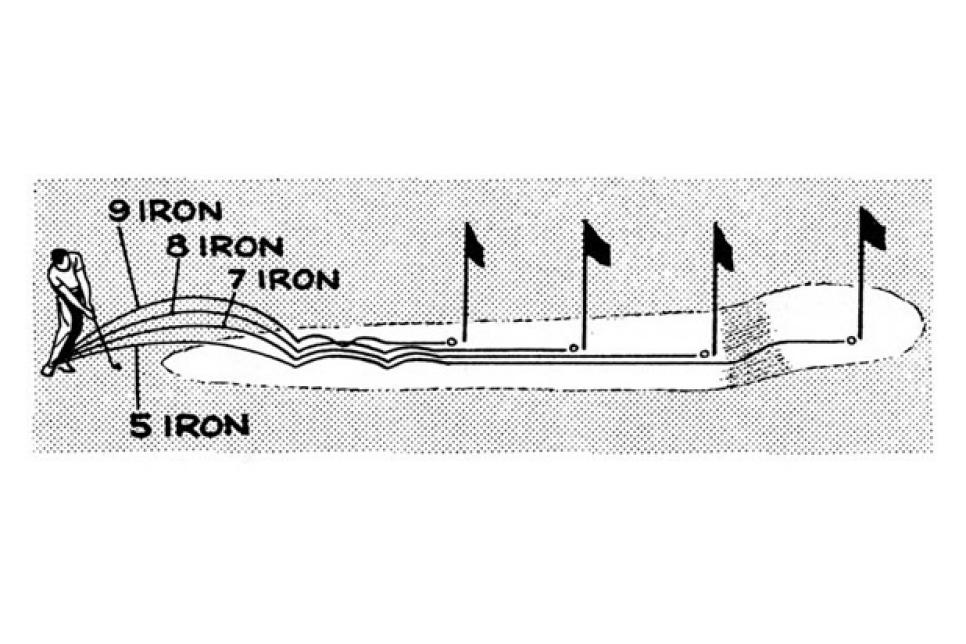
PLAY ALL CHIPS TO LAND IN ONE SPOT
Chip with the club that best fits the situation. Then you can land the ball in the same area on any shot—usually just past the fringe. Club selection depends on the distance from the landing area to the hole and the slope of the green.

PICK PUTTING OVER CHIPPING
Never feel guilty about putting from off the green, as long as you think that the putter will give you the best chance for a successful result. Keep in mind that putting from the fringe makes the most sense when the ball is sitting cleanly or the grass is lying toward the hole (top). When the grass is lying away from the green (above) or the ball is sitting down even a little, you might be better off chipping with a 5- or 6-iron.That said, amateurs will almost always be more effective putting the ball. Your worst putt is usually better than your best chip. WHAT I THINK TODAY: If you don’t believe me that putting is better, take 10 balls and hit five with a wedge and five with your putter from just off the green. Take the average distance you leave yourself, and you’ll see what I mean.

STAY OVER THE BALL ON THE BACKSWING
If your body sways to the right on the backswing, you have to make a reverse sway on the downswing. This makes it difficult to return the clubhead squarely to the ball.It’sh better to stay over the ball during the backswing. The best method for accomplishing this is to place most of your weight on your left foot at address. At the same time, you should feel a slight downward pressure on the inner portion of your right foot. Going back, be certain that any movement of the weight doesn’t go beyond the inside of your right foot. WHAT I THINK TODAY: This is good advice. One way to make sure you get it right is to focus on keeping the right leg in position as you swing back–no lateral movement.
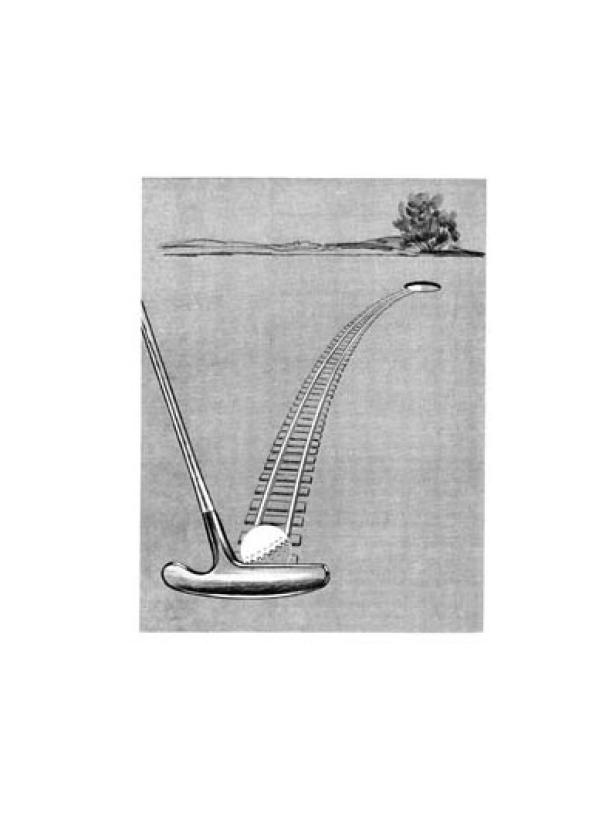
IMAGINE PUTTS RIDING THE RAILS
I think of the ball as sitting on a pair of railroad tracks that run into the hole. If you’re having a difficult time picturing the line on putts, try getting to the practice green while the morning dew is still covering the grass. Your putts will leave paths, giving you precise images you can use.
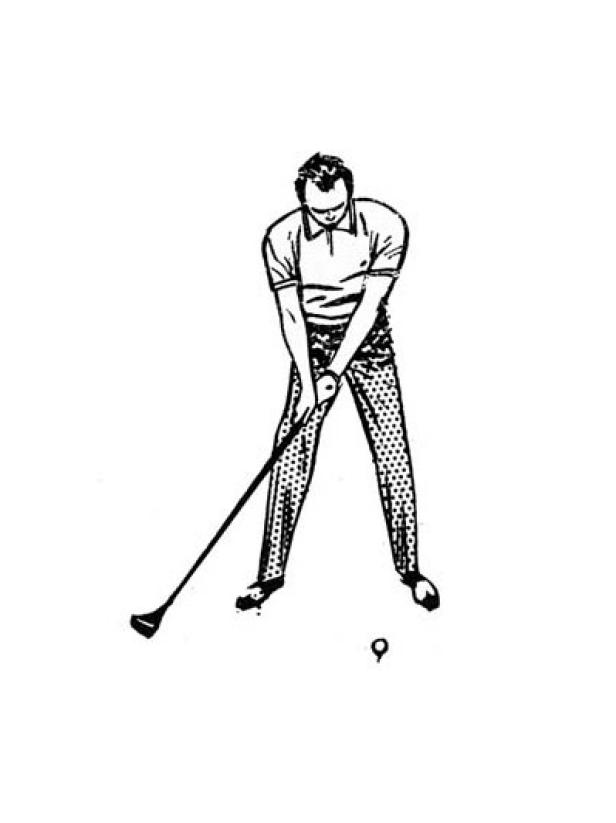
START BACK WITH NO WRIST ACTION
Begin every swing smoothly and without breaking your wrists. You have to take it straight back “in one piece,” as they say. Strive to do this for the first 12 inches the clubhead moves, and you’ve got the swing practically licked. Starting the club in this way gets your whole body into the act, from feet to shoulders.
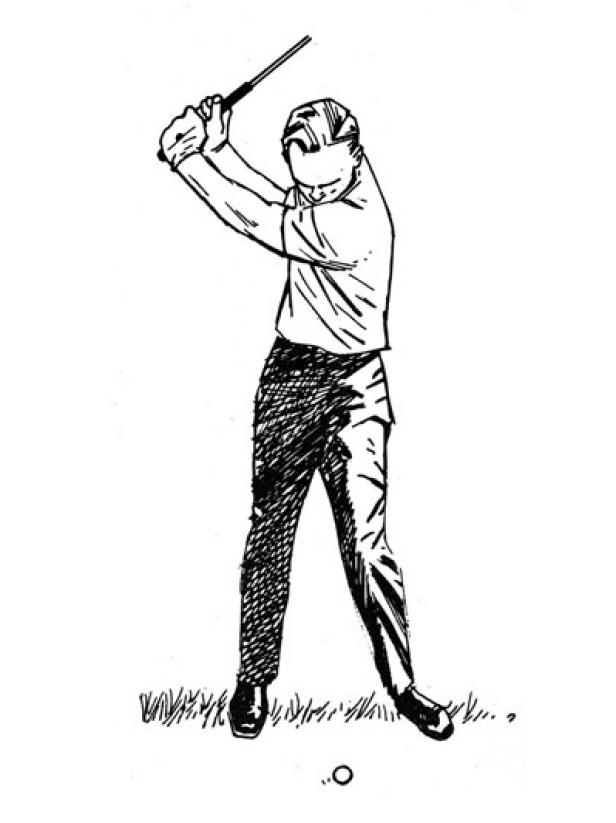
KEEP IT COMPACT FOR CONTROL
Try to keep the club under control at all times, especially at the top of the backswing. Each of us has physical limits. We can take the club back just so far. You’ve got to keep the backswing compact and well within your natural capabilities. Because the minute you’re stretching yourself as you swing back, the minute you’re fighting the weight of the club instead of remaining easily in control of it, you’ve swung too far. When you go too far, one of two things happens: You bend your left elbow, or the grip gets loose in your hands. Either way, you’re lost. WHAT I THINK TODAY: Long and loose is still a bad idea. There aren’t very many good players like John Daly.

POINT THE SHOULDER TOWARD THE BALL
The shoulder turn occurs on a tilted plane, so the left shoulder should move down as well as around on the backswing.If you’ve properly tilted and turned your shoulders going back, your left shoulder should point toward the ball at the top of the swing. This backswing turn will put you in the right position to strike the ball squarely and forcefully. Many average golfers, especially those who have played baseball, turn their shoulders on too much of a level plane. Rotation like this makes the swing too flat and limits your chances of hitting the ball with a square clubface. WHAT I THINK TODAY: I love this illustration–take another look. Turning level is a big problem, just like it was in the ’60s when I wrote this tip.
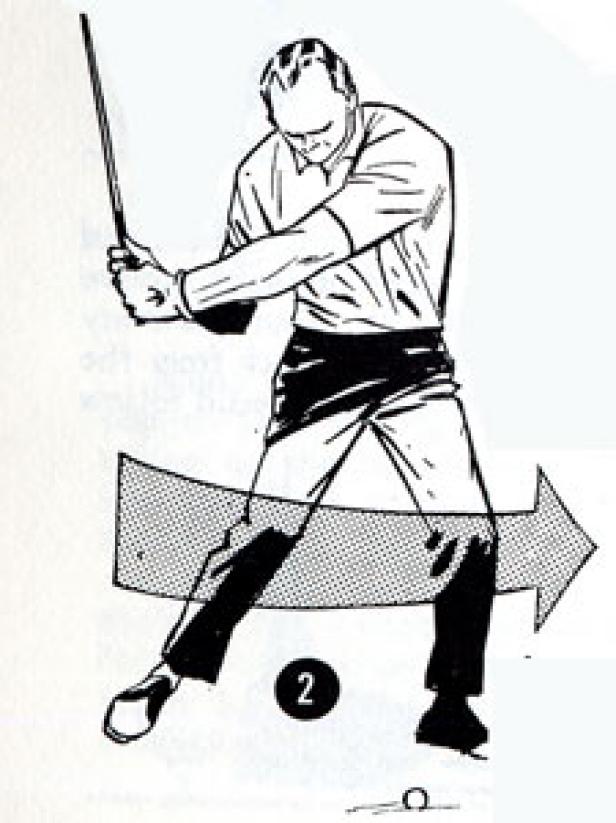
BONUS TIP: HITTING BEHIND BALL? ACCENTUATE LEG ACTION
Golfers of every ability level occasionally hit behind the ball on key shots. If this problem persists in your game, I suggest you stress foot and leg action in your downswing. Striking the turf behind the ball — hitting “fat” as they say — usually is caused by failure to shift enough weight onto the left foot on the downswing.Good legwork is the answer in making this weight shift properly. As you begin to move into your downswing, drive your legs to the left (see illustration) while keeping your upper body in position. This leg action will tend to “level out” the path of your clubhead in the hitting area, and the clubface will move squarely into the back of the ball.

BONUS TIP: “EXTEND” YOURSELF ON TEE SHOTS
The drive is one shot in golf where the emphasis is on distance as opposed to accuracy (though the latter is certainly important). The drive is also the one shot in which you want to sweep the ball without striking the turf.One way to achieve maximum distance while sweeping the ball away is to fully extend yourself, both on your backswing and your follow-through.Note, in the illustrations, how my hands move as far as possible away from my body, both going back and swinging through. It is this extension that (1) helps me fully stretch the big muscles of my body and legs and (2) flattens out my clubhead arc in the hitting area so that it is traveling at “ball height” for maximum distance before and after impact.

BONUS TIP: SHORT BACKSWING FOR SHORT SHOTS
A common fault among novice golfers is taking too long a backswing on the shots from within, say 40 yards of the green. After taking a long backswing, they let the clubhead “coast” into the ball. In short, such golfers are regulating the length of the shot by the force of the swing, rather than its length. Failure to accelerate the clubhead into the ball produces a sloppiness and loss of club control. Scuffed or topped shots result.In the illustration I am hitting a wedge shot of about 30 yards. Note that my backswing is short — the hands barely reach hip height — and then I gradually accelerate the speed of the clubhead as it moves into and through the ball.Learn to regulate the distance you hit these shots by the length of your backswing. Thus, you will be able to strike at the ball with about the same force on all shots, regardless of their length. You will not only hit these shots more squarely, but you will also develop a more sensitive touch.
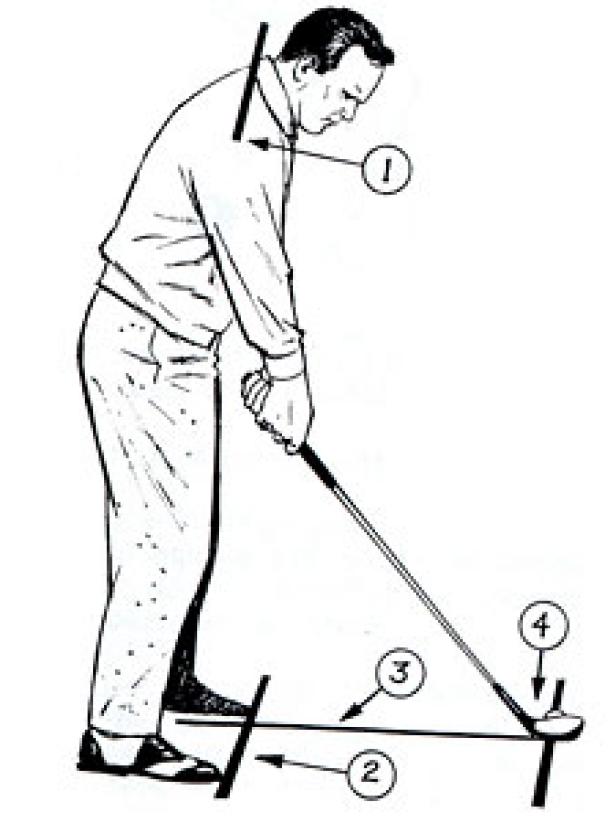
BONUS TIP: COUNTDOWN FOR LOWER SCORES — 4,3,2,1
Successful golfers follow a pattern of behavior when they set up to a shot. You too should follow a “countdown” — checking off key indicators that tell you you’re ready to fire. For instance: 4: Put the clubface squarely behind the ball so that it looks at the target. 3: Put your feet in position so that the ball is opposite the desired spot in your stance. 2: Check to see that your stance is square — toes equi-distant from the target line. 1: Check to see that your shoulder line is also square — parallel to the target line.Finally, blast off just like the rockets do — slowly and smoothly, gradually increasing in velocity.

BONUS TIP: ON SHORT SHOTS, WEIGHT STAYS TO LEFT
On chip shots from around the edge of a green, we must make certain that the club does not strike the ground before it meets the ball (No. 1). The best way to avoid such scruffed shots is to address the ball with your hands slightly ahead of the ball and with most of your weight on your left foot (No.2 and No. 3). Then keep your weight on your left foot throughout your chipping stroke. Keeping your weight to the left will cause your club to brush the grass and sweep the ball into the air. Only when your hands move behind the ball or your weight shifts to the right will you be in danger of scruffing the shot.
